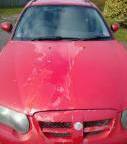Long* running landy 88" project - Flocking hell
-
Similar Content
-
I'll get round to it at some point - Pontiac Fettling and Citroen Procrastination 1 2 3 4 19
By Rust Collector,
- 541 replies
- 56,470 views
-
- 244 replies
- 21,697 views
-
- 1,058 replies
- 145,402 views
-
Zel's Motoring Adventures...Peugeot, Renault, Rover, Trabant, Invacar & A Sinclair C5 - 14/04 - Overdue service items... 1 2 3 4 182
By Zelandeth,
- 5,457 replies
- 1,921,639 views
-
- 14 replies
- 500 views
-






Recommended Posts
Create an account or sign in to comment
You need to be a member in order to leave a comment
Create an account
Sign up for a new account in our community. It's easy!
Register a new accountSign in
Already have an account? Sign in here.
Sign In Now